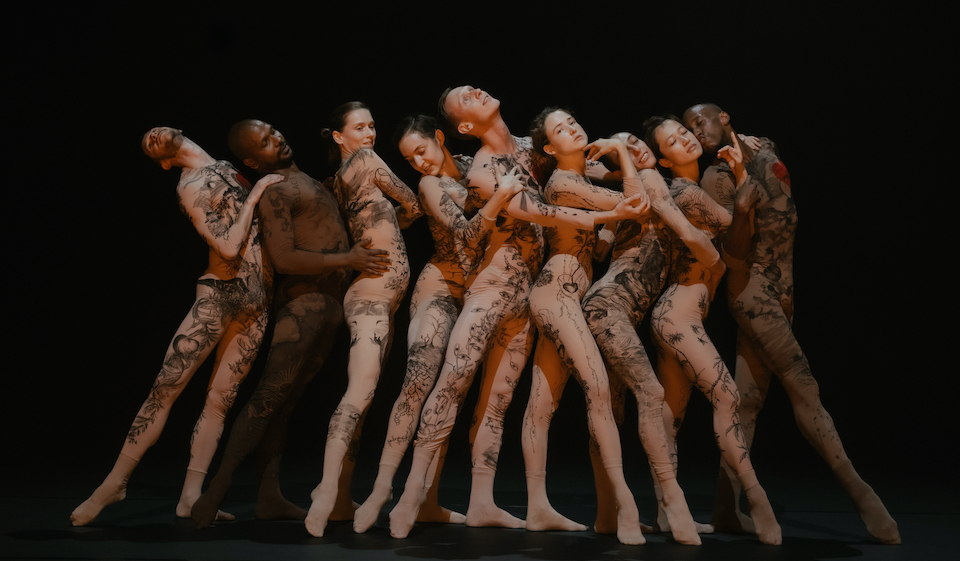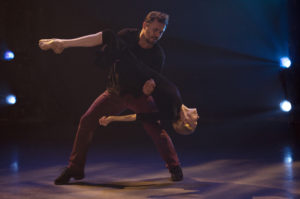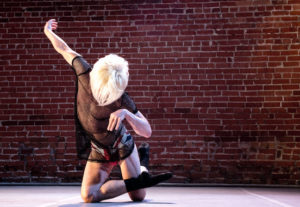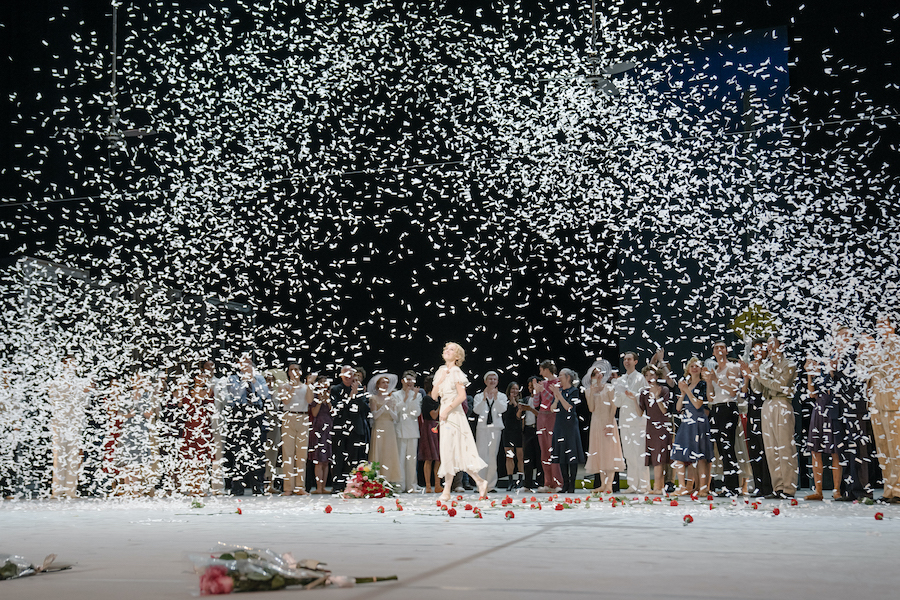Toronto’s Spring Season: In full bloom - Vancouver Ballet Society
- Home
- City Reports 2020 - 2023
- Toronto’s Spring Season: In full bloom

By Michael Crabb
As the pandemic’s most recent quasi-lockdown ended and the provincial government began a phased return to “normal,” there was a welcome blossoming of live, in-person events.
Friends and admirers of the late Patricia Beatty, co-founder of Toronto Dance Theatre, were finally able to gather for a celebration of her life and art. Danceworks resumed with Montreal’s Lina Cruz. A fundraising gala was held to support the legacy initiatives that will extend beyond the formal winding down of Peggy Baker Dance Projects this fall. The National Ballet of Canada was back at full throttle.

Most venues, in an effort to reassure patrons concerned that the provincial government was moving too fast, opted to maintain mandatory mask-wearing and proof-of-vaccination policies. Some, such as Harbourfront Centre, voluntarily retained capacity restrictions. Although it did feel odd to sit in a half-empty Fleck Dance Theatre for the Toronto debut of Israel’s L-E-V, part of Harbourfront’s Torque series, those in attendance responded with raucous enthusiasm to Chapter 3: The Brutal Journey of the Heart. The work is the final part in a trilogy by artistic director/choreographer Sharon Eyal that explores the trials and tribulations of love. Despite its somewhat daunting title, the work itself was opaque enough in meaning that it was easy to enjoy the sheer flow of movement. Eyal is an alumna of Batsheva Dance Company and a disciple of Ohad Naharin and his Gaga technique, so there was lots of beguiling movement on which to feast. The cast size of Chapter 3 is apparently variable. In Toronto it was performed by a cast of six, costumed, courtesy of Christian Dior Couture’s Maria Grazia Chiuri, in hand-painted faux body-art unitards with blood-red heart motifs on every chest.
Next up in the Torque series was Montreal’s Anne Plamondon performing with Los Angeles-based James Gregg in her 55-minute Seulement toi (Only You). Plamondon had originally made the duet for a March 2020 premiere but the pandemic scuttled that. Seulement toi finally made its debut at Montreal’s Usine C in late March, prior to the Toronto engagement.
Plamondon took the opportunity to rework the piece to reflect her own experience of living through the pandemic. The duet presents the struggle of two people, the exact nature of whose relationship is left open, to find connection. At times they seem to inhabit isolated realms, at others they physically connect and share intimate whispers. Loose-fitting tops are removed and put on again, suggestive of the ways we seek to alter others’ perceptions of us. [Seulement toi is also reviewed in DI’s Montreal report.]

James Kudelka’s Four Old Legs, commissioned by artistic director Laurence Lemieux’ Citadel + Compagnie and given its premiere in April 2019, also features a close but unspecific relationship between a man and a woman, in this instance portrayed by former star ballerina Evelyn Hart and contemporary dancer Zhenya Cerneacov. Set to a playlist of Kudelka’s choosing, the work unfolds through 16 vignettes — mostly duets — that movingly, through time, trace the arc of a loving but troubled relationship. Four Old Legs was critically acclaimed and, but for the pandemic, would doubtless have toured widely. It did reappear at last summer’s Festival des arts de Saint-Sauveur in Quebec and, thanks to the determination of Lemieux in her debut as a film producer, was recorded soon after in Toronto.
The film version, given a gala “avant premiere” screening on April 4, is imaginatively directed by veteran performing arts filmmaker Barbara Willis Sweete. It retains much of what made the live performance so compelling and at times actually intensifies its emotional impact. The film was available on-demand via the C+C website through April 20 but deserves to find a larger audience on a specialty streaming service.

The Citadel, though a relatively small studio space, has proved itself an excellent venue for performances that benefit from an intimate artist-audience connection. Such was the case with former long-time Toronto Dance Theatre artistic director Christopher House’s New Tricks. While his former company was reviving a template House had successfully invented — pairing dancers with outside artists to see what might result from unusual collaborations — House presented an extended solo that was as much performance art as dance; or was it? There was a matter-of-fact directness about the whimsical costume changes and playing with props that was far removed from the winking archness and calculated transgressions one associates with performance art. The whole affair had an almost childlike innocence while the vignettes offered a multitude of possible meanings.
For a company that had its rehearsal schedule shortened by public health mandates, the National Ballet of Canada bravely moved forward with its winter season, March 2-27, presenting two full-length story ballets (A Streetcar Named Desire and Sleeping Beauty) and a mixed bill. The latter included two works by tyro choreographers — Skyward by Alysa Pires, company choreographic associate, and On Solid Ground by principal dancer Siphesihle November — as well as the company premiere of Christopher Wheeldon’s After the Rain and a revival of Kenneth MacMillan’s jolly ragtime romp, Elite Syncopations.

John Neumeier’s A Streetcar Named Desire was revived as an exit vehicle for Sonia Rodriguez, retiring from the company after a remarkable 32 years. After the Rain — the full version, not just the sublime pas de deux — was acquired for the benefit of another departing principal ballerina, Jillian Vanstone. After the Rain also provided a final opportunity to celebrate the wonderful partnership she has enjoyed with Harrison James. At age 40, Vanstone clearly has a lot of dancing left in her, but better people ask “Why so soon?” than “When?” Both ballerinas will be remembered fondly by National Ballet fans.

